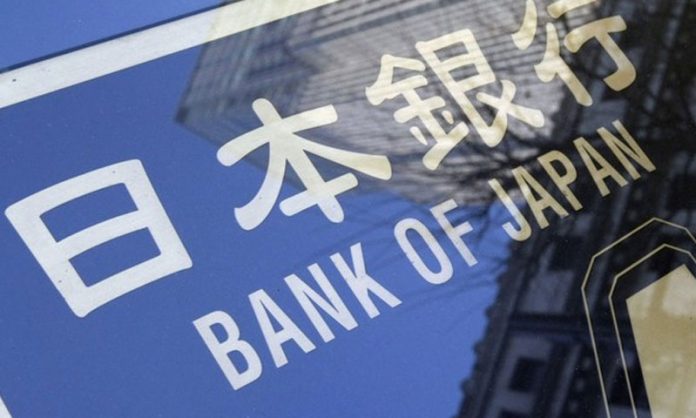TOKYO: The Bank of Japan on Tuesday improved its view of the world’s number-three economy, providing some relief to the government’s stuttering growth drive, as exports pick up on the back of a steep slide in the yen.
Policymakers held fire on further stimulus and said they would maintain a plan to keep the yield on government 10-year bonds around zero, part of a broader bid to stimulate growth.
The bank’s final meeting of 2016 came on the heels of stronger-than-expected November export data and the first rise for more than a year in its closely watched survey of business confidence.
“Exports have picked up,” the bank said, adding that corporate and private spending were also on the upswing.
“Reflecting these moderate increases in demand both at home and abroad, and the progress in inventory adjustments, industrial production has picked up.
“Japan’s economy is likely to turn to a moderate expansion.”
The yen has fallen more than 17 percent against the greenback since Donald Trump’s shock US presidential win in November fanned speculation that his plans for big government spending and tax cuts will force the Federal Reserve to hike borrowing costs.
On Tuesday, the US unit was at 117.20 yen from 117.07 yen just before the announcement.
A weaker yen is good news for Japan’s exporters as it boosts their competitiveness and profitability.
The bank noted that exports and industrial production are gathering steam, after saying they were “sluggish” in a November statement.
The bank made no reference to any timeline for winding down its 80 trillion yen annual asset-purchase programme.
However, the positive words come as Prime Minister Shinzo Abe’s big-spending, easy-money plan to kickstart growth falters.
Japan’s recovery has been wobbly and Tokyo this month downgraded its July-September growth estimate to 0.3 percent, from an initial 0.5 percent reading.
The cut underlined the challenges in reviving an economy plagued by a deflationary price spiral that hurt activity for years.
In November, Japan’s central bank again pushed back its timeline for hitting an inflation target that looks increasingly out of reach.
For more than three years, BoJ policymakers have embarked on a bond-buying stimulus programme to try to keep interest rates ultra-low and increase borrowing and spending.
The scheme was introduced by bank governor Haruhiko Kuroda in conjunction with the Abe’s spending programme, dubbed Abenomics.
But last month, the central bank said it now expects to hit two percent inflation by March 2019 — four years later than its original target and the latest in a string of delays.
The BoJ hoped consumers would spend more if prices were rising, persuading firms to expand operations and getting the economy humming.
But wage growth has fallen below expectations, meaning workers have less money to spend. Abe’s promises to cut through red tape — the key third plank of Abenomics — have also been slow in coming.





